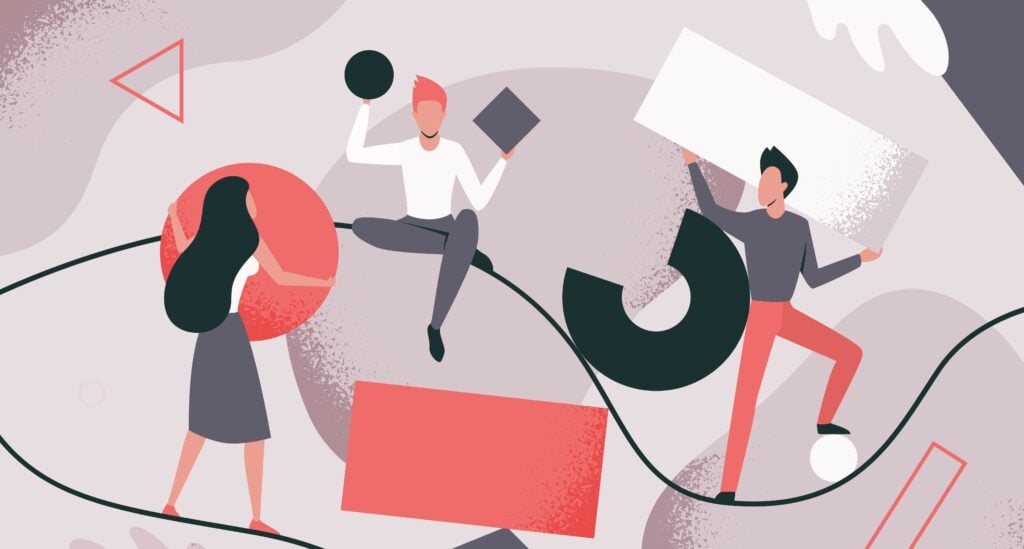Attention-deficit/hyperactivity disorder (ADHD)
Reviewed by Susan Radzilowski, MSW, LMSW, ACSW

What is ADHD?
Attention-deficit/hyperactivity disorder (ADHD) is a mental health disorder caused by physiological factors. People with ADHD struggle with inattention, hyperactivity, and/or impulsiveness. Most people are diagnosed as kids, though some aren’t diagnosed until adulthood. ADHD is one of the most common childhood disorders in the United States.


These risk factors may increase your likelihood of developing ADHD:
- Genetics
- Biochemistry
- Traumatic brain injuries (TBIs)
- Early exposure to environmental toxins (such as lead)
- Exposure to drugs or alcohol before birth
- Premature birth
Types of ADHD
ADHD symptoms show up in three different ways:
- People with the predominantly inattentive type of ADHD have trouble paying attention, struggle with follow-through, and are easily distracted.
- People with the predominantly hyperactive-impulsive type may fidget, interrupt others, move constantly, and be impatient.
- People with a combined presentation have symptoms from both types of ADHD.
What’s the difference between ADD and ADHD?
ADD stands for “attention deficit disorder,” an outdated term for what’s now called the predominantly inattentive type of ADHD. Today we use “ADHD” to describe all types of this disorder, regardless of what symptoms a person has.
Symptoms of ADHD
People with the predominantly inattentive type of ADHD may:
- Lack attention to detail
- Struggle to pay attention to tasks
- Seem like they aren’t listening, even when they’re directly addressed
- Lack follow-through or be easily sidetracked
- Struggle with organization
- Avoid or dislike tasks that require sustained mental effort
- Frequently lose things
- Be easily distracted
- Be forgetful
People with the predominantly hyperactive-impulsive type of ADHD may:
- Fidget
- Have trouble staying seated
- Be restless or impatient
- Find it challenging to do enjoyable things quietly
- Be constantly in motion
- Talk constantly
- Interrupt or intrude
- Offer answers before someone finishes asking a question
To be diagnosed, kids must have at least six symptoms (and people over 17 must have at least five symptoms) from one of the two types for at least six months.1
To be diagnosed with a combined presentation of ADHD, you must have at least six months of symptoms from both types (six of each for children; five of each for adults).
What does ADHD look like for adults?
Adult ADHD symptoms may look different or be less noticeable than childhood symptoms. In adults, this disorder can appear as:
- Missing work deadlines
- Not paying attention during meetings
- Starting tasks but struggling to finish them
- Hyperfocusing on a single task and neglecting others
- Frequently losing or misplacing things
- Taking over conversations
- Engaging in impulsive or risky behavior
- Speaking without thinking first
To receive a diagnosis as an adult, you must have had ADHD symptoms before age 12.
Some research suggests that ADHD is underdiagnosed in adults and especially among women and girls, who often have inattentive symptoms and may have learned to hide them more successfully.2, 3
What does ADHD look like for children?
ADHD symptoms can look like regular childhood qualities. Most kids, for example, go through periods of being restless, loud, or easily distracted. If a child doesn’t sit quietly in school, that doesn’t necessarily mean they have ADHD.
Other disorders, such as learning disabilities, can look similar to ADHD. It’s also common for kids with ADHD to have another childhood disorder at the same time.
Your doctor must evaluate your child’s specific symptoms to provide a professional diagnosis. Kids are most often diagnosed when they enter school, but doctors can diagnose ADHD in children as young as two. According to the National Institute of Mental Health, the average age of diagnosis is six, and boys are likelier to be diagnosed than girls.4
Treatment options
Most treatments for ADHD involve therapy, medication, or a combination of both. Self-care strategies and support groups can be incorporated into treatment as well.
Types of therapy
Therapy can offer new skills to help you manage your symptoms in healthier ways. Common types of therapy for people with ADHD include:
- Behavioral therapy (also called behavior modification), which uses reinforcement to increase positive behaviors and discourage unwanted or unhelpful behaviors.5
- Cognitive behavioral therapy (CBT), which helps you address unhelpful thoughts or beliefs behind dysfunctional patterns.
Therapy can also involve training for people in your support system—family members, partners, teachers—to help them understand ADHD and encourage you in healthy behaviors.
Which medications work for ADHD?
Stimulants like Adderall and Ritalin are the most common medications prescribed for ADHD. This may sound surprising, especially for someone with predominantly hyperactive-impulsive symptoms—if you’re restless, it can feel counterintuitive to take medication associated with an increase in energy. But if you have ADHD, a prescribed stimulant can help you focus and stay calm.
Stimulants come in three kinds: short-acting, intermediate-acting, or long-acting. The kind you’re prescribed determines how often you take your medication, ranging from once a day to multiple times per day.
Seeking treatment
The first step toward getting treatment is to see your primary care physician, who can help determine if your symptoms point to ADHD or a different diagnosis. They can also prescribe medications and refer you to a therapist.
You might also choose to seek therapy on your own. Maybe you received an ADHD diagnosis as a child and were prescribed medication for it, but never went to therapy. To find a licensed mental health professional near you, browse our directory.

Sources
1 https://www.cdc.gov/ncbddd/adhd/diagnosis.html/
2 https://www.ncbi.nlm.nih.gov/pmc/articles/PMC4195639/
3 https://bmcpsychiatry.biomedcentral.com/articles/10.1186/s12888-020-02707-9/
4 https://www.nimh.nih.gov/health/statistics/attention-deficit-hyperactivity-disorder-adhd/
5 https://www.ncbi.nlm.nih.gov/books/NBK459285/
About the author
The editorial team at therapist.com works with the world’s leading clinical experts to bring you accessible, insightful information about mental health topics and trends.
Related articles

Initiation and activation: 2 exercises to help kids focus
Many students struggle to get started on tasks because they simply don't know...

ADHD and anxiety: Signs, similarities, and treatment
ADHD and anxiety are two mental health disorders that often occur together...

ADHD is usually diagnosed in childhood, but adults can be diagnosed with it...
